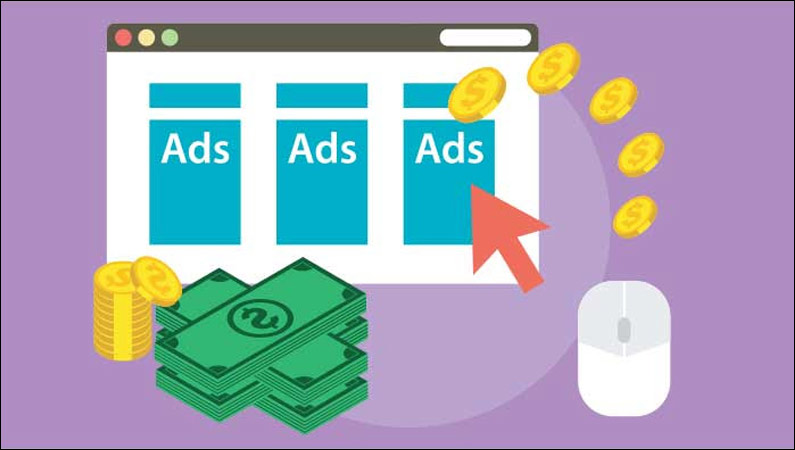Making sense of Google's AdSense changes
While noteworthy, experts agree that the updates appear to have a fairly neutral effect on publishers but implementing them could yield profits
While noteworthy, experts agree that the updates appear to have a fairly neutral effect on publishers but implementing them could yield profits

Earlier in November, Google announced two major changes to its ad platform Google AdSense and the way it worked with publishers and advertisers: updating AdSense’s revenue-share structure and moving to paying publishers by impression.
With AdSense established 20 years ago to help the then largely search-centric company monetize its product offerings, the digital advertising landscape has since vastly evolved and become more complex with multiple players crowding increasingly small screens.
The company said that these changes “will provide a consistent way for publishers to compare the differing fees across the various technologies they use to monetize and will provide even greater transparency into the media-buying process.”
Changes in Revenue Sharing
According to a blog on Google by Dan Taylor, Vice President, Google Ads, said, “When publishers have chosen to use AdSense to monetize their content, they have kept 68% of the revenue. Previously, the Google AdSense network processed fees within a single transaction. We are now splitting the AdSense revenue share into separate rates for the buy-side and sell-side. For displaying ads with AdSense for content, publishers will receive 80% of the revenue after the advertiser platform takes its fee, whether that be Google’s buy-side or third-party platforms.”
Google expects these updates to go into effect early next year, and Taylor mentioned that these changes do not require any action from publishers.
However, Siddharth Dabhade, Global Commercial Board Member and Managing Director for India, MiQ, points out that some publishers are skeptical of the motives behind this change and caution to wait and see before making assumptions about the outcome for publishers.
“There are concerns that the pay-per-impression structure might incentivize publishers to put more ads on a page, potentially leading to a loss for advertisers who rely on clicks to drive customer engagement and purchases.”
On the other hand, Girish Ramachandra, CEO and Founder, Shopalyst, the Digital Ad and Marketing Platform for Shoppable Ads, says that while the alteration of revenue structures is an exciting development, Google has provided information suggesting this change will not drastically impact revenue for publishers.
While noteworthy, experts agree that the change appears to have a fairly neutral effect on publishers though implementing this change could yield profits, but it is important to keep in mind that the full effects may only become clear once put into practice.
It should also be noted that the blog mentioned, "When advertisers use a third-party platform to purchase display ads on AdSense, publishers will keep 80% of the revenue after the third-party platform has taken its fee. Google does not control or have visibility into the fees that these third-party platforms charge advertisers or how they calculate them.”
“That being said, publishers whose content generates high impressions yet low click-through rates stand to gain the most from this. Alternatively, those who depend on click-based revenue may see slight alterations. The critical component is adopting new payment measures and adapting accordingly,” says Ramachandra.
Depending on their audience engagement and specific content, each publisher will be affected differently by the impact. As the industry navigates this change, publishers need to monitor their performance closely, so they can adapt to the changing dynamics and experiment with diverse content and engagement strategies to thrive in the evolving landscape.
Paying per Impressions
As for moving to per-impression payments, Taylor wrote, “AdSense will soon transition from primarily paying publishers per click to the display industry standard of paying per impression. This update will provide a more uniform way for paying publishers for their ad space across Google’s products and third-party platforms, helping them compare with other technology providers they use. It’s important to note that this change will not influence the type or quantity of ads publishers can display on their websites. Publishers in our ad network are required to adhere to both our AdSense policies and the Better Ads Standards which do not allow practices like pop-ups or interruptive ads that take up the majority of the screen.”
However, given the ever-increasing variations of digital ads, the pay-per-impression model could still potentially encourage publishers to increase the number of ads displayed on a webpage to generate more impressions.
“Consequently, certain publishers may become indifferent towards the quality of the content in relation to its appeal to advertisers. Typically, advertisers rely on audiences clicking on an advertisement to initiate or sustain their customer journey, ultimately resulting in a purchase. However, if a publisher no longer feels obligated to produce content that can drive clicks, it could potentially result in a disadvantage for advertisers,” observes Dabhade
Ultimately, this could lead to consumers becoming bored and uninterested in the overwhelming amount of ads being presented and engagement could be reduced. “Due to there being an excess of ads, this also means that advertisers may find it more difficult for their messages to stand out, negatively impacting their ability to efficiently communicate with their intended audiences,” points out Ramachandra.
This means that content creation and advertising strategy could be influenced by the demand for increased ads per impression, making it crucial for all stakeholders involved to understand this emerging landscape to strike a balance for both publishers and advertisers.
“Quality must remain paramount, ensuring that ads connect with audiences and enhance the online experience rather than disrupting it. Finding this balance will be essential to fostering a sustainable advertising ecosystem that benefits all parties involved,” concludes Ramachandra.